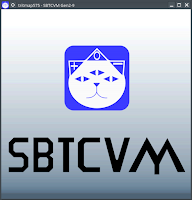SBTNET
SBTNET is the one of these three items thats planned to be tested with Gen 2.
The basic idea of SBTNET is a fully balanced ternary networking system similar to TCP/IP, emulated using a client-server scheme built against TCP/IP.
Its intention is to be used with not only SBTCVM, but other balanced ternary systems as well, as SBTNET's protocol schemes will be open, and the refrence client & server code Free (libre) open source software.
The SBTCVM-BTT2 text encoding is planned to be extended with additional control codes, and chosen as standard for SBTNET.
SBTCVM Gen 3
Gen 3, while it will be based upon and backwards compatible with SBTCVM Gen 2's ISA, roms, disks & compiler toolchain, the VM itself will be 12 trits, generally be expanded ISA & featureset wise, and fully reimplimented in the Rust programming language.
CerberOS
CerberOS is a future project for SBTCVM Gen 3. (one that will influence much of Gen 3's ISA extensions over Gen 2's ISA)
Its design goal is to implement a highly portable ternary *nix-like OS, that may stand as a foundation for other ternary OSes, and act as the OS for more ternary systems than just SBTCVM.
A purpose-built portable programming language will be designed for this task, as neither existing SBTCVM Gen 2-compatible languages are portable enough,to handle a portable Ternary OS Kernel of the type CerberOS will require.


















